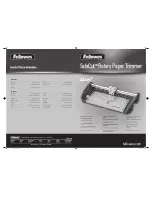
MAC215986
203
Revision A
3.10.1
Auto Header Height Control Sensor Operation
1029370
A
Figure 3.293: FM200 Float Module
The position sensors supplied with the auto header height control (AHHC) system are hall-effect sensors. Normal operating
signal voltages for the sensors fall between 10% (0.5 VDC) and 90% (4.5 VDC). An increase in sensor voltage correlates to a
decrease in ground pressure, or if you are cutting off the ground on gauge wheels an increase in the header cut height.
Sensor errors result in a 0 V signal, indicating a faulty sensor, incorrect supply voltage, or a damaged wiring harness.
Sensors
Two hall-effect sensors are installed on float indicator needles (A). As the header follows ground contours, the sensors
communicate with the combine causing it to raise and lower the feeder house to maintain a consistent cutting height and
optimum float.
Normal operating signal voltages for the sensors fall between 10% (0.5 VDC) and 90% (4.5 VDC). An increase in sensor
voltage correlates to an increase in header height. Any sensor error results in a 0 V signal, which indicates either a faulty
sensor or lack of supply voltage.
Before using the AHHC feature, you must do the following:
1. Prepare the combine to use the AHHC feature (applies only to some combine models
—
refer to the instructions for your
combine).
2. Calibrate the sensors used by the AHHC system so that the combine can correctly interpret data from the hall-effect
sensors on the float module (for more information, refer to the instructions for your combine).
NOTE:
Once calibration is complete, you are ready to use the AHHC feature in the field. Individual combine settings can
improve AHHC performance (for more information, refer to your combine operators manual).















































